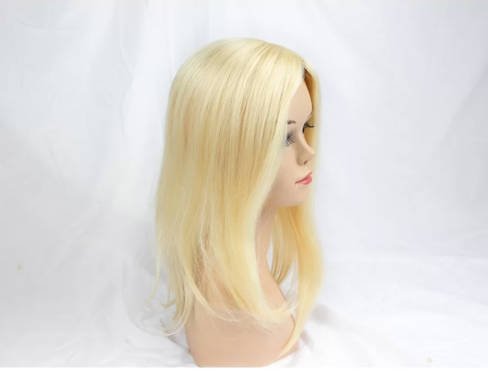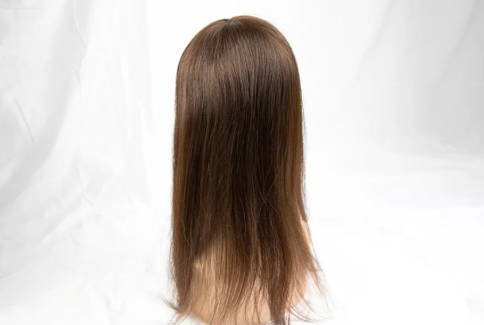
Wigs have played a big role in how people present themselves for thousands of years. They’ve shifted from marks of power and ritual to handy tools for self-expression and health needs. At Eminent Hair, we’re excited about making great wigs. Our wigs honor this long story while fitting today’s wants. In this piece, we’ll explore the lively journey of wigs across time. We’ll look at their cultural value and how new tools have turned them into stylish, easy options for all. Whether you want a wig for fashion, medical reasons, or to show your unique style, learning about their past and present can make you treasure this timeless item more. Let’s dive into the rich tale of wigs, from ancient days to now, and see how they’ve shaped human culture.
The story of wigs begins long ago. They weren’t just about looking good. In many old societies, wigs tied closely to customs, social ranks, and even staying safe.
In Ancient Egypt, wigs were a daily must, especially for the rich. The hot sun made shaved heads smart for staying clean. But wigs gave people a neat look. They also protected scalps from harsh rays.
Wigs in Ancient Egypt showed wealth and strength. Leaders and nobles wore fancy wigs. These had gold, beads, and gems to highlight their high place. The size and style of a wig told others about a person’s rank. More complex designs were for top people only.
Egyptian wigs came from human hair, animal fur, or plant fibers like flax. Skilled workers shaped these into detailed patterns. They added resins and oils to keep the wigs’ shape and glow. The work was amazing. Some wigs had thousands of tiny curls, showing great care.
In Mesopotamia and Assyria, wigs also marked importance. Kings and priests wore them in special rituals. This made them seem more powerful. These wigs, often made of human hair, had tight curls or braids to show the wearer’s role.
In places like Greece and Rome, wigs had different jobs. They weren’t for everyday use. Instead, they appeared in plays and social events.
Greek and Roman nobles used wigs to match perfect beauty ideas, like thick, bright hair. In Rome, blonde wigs were a big deal. Often made from the hair of enslaved people, they showed wealth and something rare.
Wigs mattered in public, especially in theater. Actors used them to turn into different roles. This idea started wigs as tools for changing identity, a trend that lives on today.
The ancient world made wigs signs of rank, beauty, and transformation. These ideas grew bigger in later times.
The Middle Ages saw wigs fade away. But the Renaissance brought them back. Europe began to love luxury and showing personal style.
In the early Middle Ages, wigs weren’t popular. Religious rules pushed for natural hair. But by the Renaissance, wigs became cool again. Wealthy people used them to copy old Greek and Roman looks.
Religious ideas shaped how people wore their hair. Women were told to be modest. Wigs let them follow these rules while still having fancy hairstyles. Often, they paired wigs with pretty headpieces.
By the late Renaissance, wigs showed strength in politics and society. Leaders like Elizabeth I used wigs to look young and mighty. Her red wigs became her special mark.
This time turned wigs into tools for personal and political images. It set the stage for their huge popularity later.
The 17th and 18th centuries were the best times for wigs in Europe. They became signs of high class and charm.
Perukes, or big powdered wigs, became a key part of European courts. Their fame grew under kings like Louis XIV. He wore wigs to hide thinning hair and to look grand.
Louis XIV’s court at Versailles set wig styles. Large, curled perukes were dusted white and decorated with ribbons. They showed off a person’s riches and place. These wigs cost so much that families kept them as treasures to pass down.
In England, wigs were a must for judges and lawyers. They stood for fairness and old ways. The phrase “big wig” started here. It meant someone important, showing how much wigs mattered.
Both men and women wore wigs. But styles changed by class. Nobles picked long, fancy wigs. The middle class chose simpler ones. Everyone wanted to look their best.
This time’s showiness proved wigs were top signs of status. But new tastes soon changed their role.

In the 19th century, wigs weren’t as common for daily wear. Yet, they found new uses in special places.
People started to love natural hair more. Wigs seemed fake and out of date. Still, they were key for those losing hair due to sickness or family traits.
Wigs stayed big in theater and opera. They helped actors become different characters. Wigs were made to look more real to match bright stage lights.
The industrial revolution brought machines to make wigs. This cut costs. New materials, like horsehair mixes, made wigs comfier. Better air flow in designs helped too.
These changes made wigs easier to get. They set the stage for wigs to come back strong in the 20th century.
Today, wigs are loved for their many uses. They help with medical needs, cultural practices, and fashion across the world.
Wigs are vital for people losing hair from conditions like alopecia or cancer treatments. They give a simple way to feel confident and normal again.
Wigs are now a fun way to show who you are. People try new colors, lengths, and styles without permanent changes. From cosplay to daily looks, wigs spark creativity.
Stars like Beyoncé and Lady Gaga have made wigs a fashion hit. Their fans copy them. Social media spreads this love, showing wigs as easy ways to change style.
Today, wigs are for everyone. They meet both practical and creative needs in exciting ways.
New tools have changed how wigs are made. They now look very real and can be made to fit anyone’s needs.
Feature | Synthetic Wigs | Human Hair Wigs |
Cost | Cheap | Pricey |
Care | Simple, holds shape | Needs more work, restyling |
Lasting | 3-6 months | Up to 1-2 years with care |
Look | Pretty good, less flexible | Super real, can be changed |
Synthetic wigs are easy on the wallet and simple to keep up. But human hair wigs look and feel like real hair. They’re perfect for long-term use.
Lace front wigs make the hairline look natural. Monofilament caps act like a real scalp for realistic parting. Custom features, like hand-tied knots and adjustable bases, give a perfect fit.
These updates make wigs cozy and hard to spot as fake. They work for many different needs.
At Eminent Hair, we’re proud to make top-quality wigs. We mix old-school skill with new ideas. Based in Qingdao, China, we craft custom and ready-made men’s and women’s wigs, toupees, and hair extensions. We use the best human hair.
Our motto is clear: “The quality of our products is the heart of our success! Making customers happy is our forever goal!” With about 50 skilled workers, we make sure every wig is top-notch. They last long and look real.
We have lots of products, from lace front wigs to mono toppers. They fit medical, fashion, or cultural needs. Whether you want a wig fast or one made just for you, we’ve got what you need.
From ancient Egypt’s status signs to today’s tools for empowerment, wigs have had a colorful role in history. They’ve gone from being for the rich to solutions for all. They show changes in culture, tools, and personal style. At Eminent Hair, we’re thrilled to keep this story going. We offer wigs that help our customers feel sure of themselves and true to who they are. Wigs have come a long way, but their power to transform lives stays strong.
Synthetic wigs use man-made fibers. They’re cheap and easy to care for. But they don’t style as easily. Human hair wigs, like those at Eminent Hair, use real hair. They look and feel natural. You can style them any way you want. But they need more care. Check the table above for more details.
To make your wig last longer:
· Wash softly: Use sulfate-free shampoo and cool water every 10-15 wears.
· Store right: Keep it on a wig stand to hold its shape. Avoid heat and sunlight.
· Brush gently: Use a wide-tooth comb to prevent damage.
Wigs don’t hurt your hair if used right. A wig cap cuts down on rubbing. Avoid tight wigs to keep your scalp happy. Regular scalp care keeps your hair strong. For more help, reach out to us at Eminent Hair.
The quality of the products is the foundation of our existence!Customers'satisfaction is our permanent commitment!